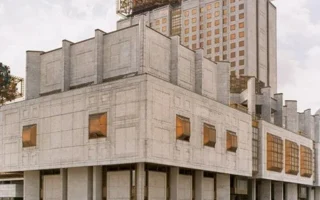Introduction:
In the lexicon of architectural terminology, few words carry the same weight of significance as “oculus.” This term, derived from Latin meaning “eye,” transcends mere linguistic description to embody a concept that lies at the intersection of form, function, and symbolism. In this comprehensive exploration, we unravel the mysteries and marvels of the oculus in architecture, tracing its origins, unraveling its meanings, and examining its profound impact on built environments.
1.Origins and Evolution:
The roots of the oculus extend deep into antiquity, with its earliest manifestations found in the architectural marvels of ancient civilizations. From the domes of Roman temples to the soaring ceilings of Byzantine churches, the oculus emerged as a design element that transcended mere structural necessity. Over the centuries, its form evolved in response to cultural, technological, and aesthetic shifts, adapting to new architectural styles and construction techniques.
2.Symbolism and Significance:
At its core, the oculus embodies a fusion of practicality and symbolism, serving as a conduit for light, air, and spiritual transcendence. In ancient cultures, it was often imbued with religious and metaphysical symbolism, representing the all-seeing eye of divine providence. This symbolic interpretation persisted through the ages, finding resonance in the spiritual architecture of medieval cathedrals and the enlightenment ideals of the Renaissance.
3.Architectural Functions:
Beyond its symbolic connotations, the oculus fulfills a range of practical functions within architectural design. Positioned strategically within a structure, it acts as a source of natural illumination, infusing interior spaces with a sense of warmth and vitality. Additionally, the oculus promotes natural ventilation, facilitating the exchange of air and enhancing occupant comfort. These dual functions of light and air make the oculus a vital element in the creation of healthy, sustainable built environments.
4.Iconic Examples:
Some of the most iconic examples of the oculus can be found in the world’s architectural masterpieces, where it serves as a defining feature of the built form. The Pantheon in Rome, with its monumental dome pierced by a colossal oculus, stands as a testament to the ingenuity of ancient engineering and the enduring power of architectural symbolism. Similarly, the Oculus of the Dome of the Rock in Jerusalem captivates visitors with its exquisite geometric design and spiritual resonance.
5.Modern Interpretations:
In contemporary architecture, the oculus continues to inspire designers with its timeless elegance and functional versatility. From sleek minimalist residences to cutting-edge cultural institutions, architects incorporate oculi into their designs to create dynamic spatial experiences. Advances in technology and materials have expanded the possibilities for oculus design, allowing for greater experimentation with form, scale, and transparency.
6.Cultural Significance:
The oculus transcends geographical and cultural boundaries to become a universal symbol of human ingenuity and aspiration. Its presence can be found in architectural traditions around the world, from the soaring domes of Islamic mosques to the intricate lattice work of Hindu temples. Across cultures, the oculus serves as a metaphor for the human quest for enlightenment, inviting contemplation and connection with the divine.
7.The Oculus in Contemporary Discourse:
In addition to its architectural significance, the oculus has captured the imagination of artists, writers, and philosophers throughout history. From the surrealist paintings of Salvador Dali to the existential musings of Jean-Paul Sartre, the oculus serves as a motif that transcends its architectural context to evoke themes of perception, identity, and existential inquiry.
Conclusion:
In conclusion, the oculus stands as a testament to the enduring power of architecture to inspire wonder, provoke thought, and elevate the human spirit. As both a functional element and a symbol of transcendence, it embodies the timeless pursuit of light, space, and meaning that lies at the heart of the architectural endeavor. Whether gazing up at the celestial canopy of a historic cathedral or marveling at the contemporary reinterpretations of the oculus, we are reminded of the profound impact of architecture on our lives and our world.




